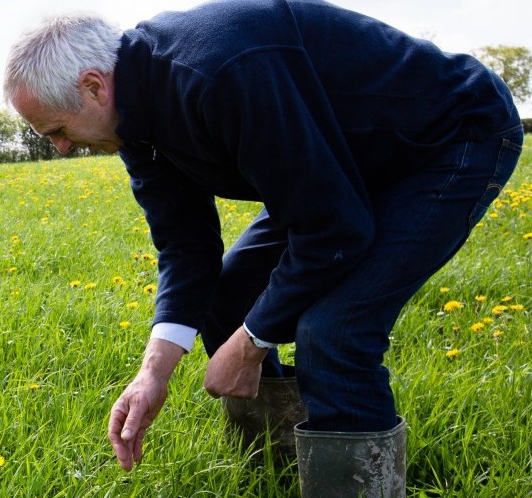
Soil Is the Stomach of the Plant
I am a long-standing farmer and representative of the organic movement, but it is only recently that I have come to see just how much microbiology permeates every aspect of our lives. Although theoretically and mechanistically I knew this a long time ago, and was aware of the importance of soil biology and mycorrhizal fungi, it was only in 2012 that it really began to dawn on me how understanding the intimate, biological and symbiotic processes involved in my own digestion sheds light on the equivalent processes taking place in the soils of my farm.
April 21, 2015 | Source: Resilience | by Patrick Holden
I am a long-standing farmer and representative of the organic movement, but it is only recently that I have come to see just how much microbiology permeates every aspect of our lives. Although theoretically and mechanistically I knew this a long time ago, and was aware of the importance of soil biology and mycorrhizal fungi, it was only in 2012 that it really began to dawn on me how understanding the intimate, biological and symbiotic processes involved in my own digestion sheds light on the equivalent processes taking place in the soils of my farm.
In 2012 I heard a conference speech by Patricia Quinlisk, Head of Public Health in Iowa, about the remarkable recovery rate – up to 80% – of patients with digestive infections after they had received fecal microbiota transplants. Where antibiotics had been detrimental to their health, introducing healthy bacteria from stools had restored their colonic microflora.
It was through understanding that the human body is a biome – by definition, a large, naturally occurring community of flora occupying a major habitat – that I realised the full meaning of soil life and how interconnected it is to all other ecosystems. The dark mysterious world of soil biology is rarely brought to the daylight of people’s understanding, even in the organic movement, due to the assumption that this is reserved for the in-depth investigations of soil scientists. The attention to soil during this International Year of Soils and the Berlin Global Soil Week 2015 will hopefully bring some of the fascinating discoveries of soil science to wider public awareness. However, if we understand this science only in terms of the earth beneath our feet, we miss out on seeing the awe-inspiring interconnectivity of soil with the rest of life.
Parallel digestive systems
The key concept that has changed my thinking on farming is to understand that the soil surrounding a plant’s root zone is effectively its digestive system, or ‘stomach’. Building on this parallel, my body breaks down the food I eat in an internal and, mainly, but not exclusively, anaerobic process that involves symbiotic communities of bacteria, which occupy the stomach, small intestine and large intestine. Nutrients are absorbed through the huge surface area of villi lining the gut, a process that is mirrored in the soil, although with plants the absorption is outside-in rather than inside-out. It is in this sense that the soil and its bacterial and fungal community can be seen as analogous to an external stomach of a plant, since these organisms, including a network of mycorrhizal fungi, play a central role in breaking down organic matter into absorbable nutrients, which are available to plants through their large surface area of root systems.
Although these processes in the body and in the soil function differently, there is a fundamental link – the digestive system. This system refines and transforms the material from one organism, which occupies a low place in the food chain, to nourish another, further up the ladder. Through digestion, organic materials are broken down and transformed into new life forms: the soil biome nourishes the plant through complex digestive processes in the topsoil and rhizosphere, and the plant matter in turn becomes animal flesh as it is transformed through another biome, in this case an internalised gut. The health of all these interconnected organisms is, therefore, centrally dependent on the health of their digestive processes.
